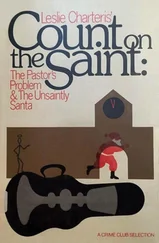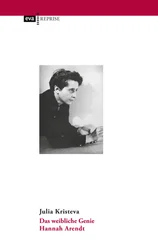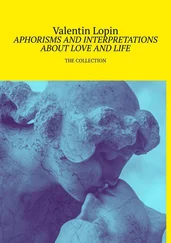33. ACT 4: THE ANALYST’s FAREWELL
1. Cf. Thomas Aquinas, Scriptum super Sentensiis , Prologue, 1.5: “Oportet…quod modus istius scientiae sit narrativus signorum, quae ad confirmationem fidei faciunt.”
2. Way , 26:9, CW 2:136.
3. Life , 9:6, CW 1:102.
4. Ibid.
5. VII D , 1:7, CW 2:430.
6. VI D , 3:1, CW 2:370–71.
7. II D , 11, CW 2:303.
8. VI D , 3:8, CW 2:374.
9. Angelus Silesius, Selections from The Cherubinic Wanderer, trans. J. E. Crawford Flitch (Westport, Conn.: Hyperion, 1978), 178.
10. Life , 25:22, CW 1:223. The “fig for all the devils” is an allusion to the female sex.
11. Ibid.
12. II D , 4, CW 2:299–300.
13. Sigmund Freud, Selected Papers on Hysteria and Other Psychoneuroses , trans. A. A. Brill (New York: Journal of Nervous and Mental Disease Publishing, 1912), 178: “ Per via di levare ” (as in sculpture and psychoanalysis) is opposed to “ per via di porre ” (as in painting).
14. G. W. Leibniz, New Essays Concerning the Human Understanding , trans. and ed. P. Remnant and J. Bennett, book 1, “Of Innate Notions,” chapter 3, § 3 (Cambridge: Cambridge University Press, 1996), xc [102].
15. On the “double alliance,” see Antoine Guggenheim, Jésus-Christ, grand prêtre de l’ancienne et la nouvelle alliance: Étude du commentaire de saint Thomas d’Aquin sur l ’“ Épître aux Hébreux ” (Paris: Parole et Silence, 2004).
16. Sigmund Freud, Complete Psychological Works , vol. 19, The Ego and the Id and Other Works , trans. James Strachey (London; Vintage 2001), 31: “His identification with the father in his own personal prehistory.” See also Julia Kristeva, Tales of Love , translated by Leon S. Roudiez (New York: Columbia University Press, 1987); and This Incredible Need to Believe , trans. B. Bie Brahic (New York: Columbia University Press, 2009).
17. The “baroque poet,” Annibal de Lortigue (1570–1640): “ Toute chose est muable au monde. Il faut aimer à la volée …”
18. VI D , 6:8–9, CW 2:394–95.
19. Dante, The Divine Comedy , trans. Henry W. Longfellow, Paradiso , canto 1 (London: Capella, 2006), 61–63, 70–71, 85, 106–7; and canto 32, 142–45, 289, 383.
34. LETTER TO DENIS DIDEROT
1. Stéphane Mallarmé, “The Same,” in Divagations , trans. with an introduction by Barbara Johnson (Cambridge, Mass.: Belknap, 2007), 251.
2. Denis Diderot, “On Women,” trans. Edgar Feuchtwanger, www.keele.ac.uk. Accessed August 2012.
3. Denis Diderot, The Nun , trans. Russell Goulbourne (Oxford: Oxford University Press, 2005), 6, 14. The text was originally circulated in handwritten copies of La correspondance littéraire , exclusively read by a handful of enlightened North European royals. The novel appeared posthumously in 1796. The philosopher’s previous convictions deterred him from publishing it during his lifetime.
4. Ibid., 81.
5. Ibid., 92–93.
6. Ibid., 74–75.
7. Augustine, Soliloquies .
8. For M. d’Alainville’s visit, see Diderot, Œuvres Complètes (Paris: Gallimard, 1951), 1385 (my translation — LSF).
9. Diderot, The Nun , 65.
10. For the last words attributed to Diderot (“The first step towards philosophy is incredulity”), see Jim Herrick, Against the Faith (New York: Prometheus, 1985), 84.
11. Diderot to Sophie Volland, August 8, 1762 (my translation — LSF). This is not among the letters featured in Diderot’s Letters to Sophie Volland: A Selection , trans. and selected by Peter France (Oxford: Oxford University Press, 1972). Letter to Mme d’Epinay, 1767 (my translation — LSF). See Correspondance de Diderot , ed. G. Roth and J. Varloot (Paris: Minuit, 1955–1970), vol. 7, 156.
12. Friedrich Nietzsche, The Anti-Christ , trans. H. L. Mencken, (1920; Tucson: Sharp, 1999), 113.
13. Marcel Proust, “Time Regained,” in In Search of Lost Time , trans. and with an introduction and notes by Peter Collier, ed. Christopher Prendergast (London: Penguin, 2002), 6:157: “sterile celibates of art.”
14. Philippe Sollers, “Ma France,” Revue des deux mondes , April 2006. Cf. “Pascal et Sade.”
15. Mariana Alcoforado, The Letters of a Portuguese Nun , trans. Edgar Prestage (London: David Nutt, 1893), letter 5, p. 93.
16. Meister Eckhart: 1260–1327. See “German Sermon 6,” in The Essential Sermons, Commentaries, Treatises, and Defense , trans. Edmund Colledge and Bernard McGinn (Mahwah, NJ: Paulist,1981), 187.
17. Tauler: 1300–1361.
18. Mino Bergamo, “La topologie mystique,” in L’anatomie de l’âme: De François de Sales à Fénelon (Grenoble: Jérôme Millon, 1997), 149 sq., 166 sq., 193 et seq.
19. Francis de Sales: 1567–1622.
20. Fénelon (François Salignac de la Mothe): 1651–1715.
21. Jeanne Guyon: 1648–1717.
22. Diderot, “On Women.”
23. Denis Diderot, Rameau’s Nephew, D’Alembert’s Dream , trans. with introduction by Leonard Tancock (Harmondsworth: Penguin, 1966), 105: “set to music.”
24. Diderot, Dialogues , “Conversation of a Philosopher with the Maréchale de—,” trans. Francis Birrell (London: Routledge, 1927), 172, 177–78, 173, 175–76.
25. Thomas Hobbes, Leviathan (1651; Seattle: Pacific Publishing Studio, 2011), chap. 6, p. 30: “Publiquely allowed, RELIGION; not allowed, superstition.”
26. Diderot, Dialogues , 183.
27. Diderot, “Entretien d’un père avec ses enfants, ou du danger de se mettre au-dessus des lois,” in Œuvres complètes de Diderot , vol. 5, 2 (Paris: Édition Assézat-Tourneux, Garnier Frères, 1875–1877), 308 (trans. — LSF).
28. Bergamo, L’anatomie de l’âme , 67: “carrousel vertigineux et proliférant de subdivisions.”
29. Fénelon, archbishop of Cambrai, was nicknamed the Swan of Cambrai in allusion to his disagreements with Bossuet, known as the Eagle of Meaux.
30. Bergamo, L’anatomie de l’âme , 160 et seq.
31. J. B. Bossuet, Correspondance , ed. C. Urbain and E. Levesque (Paris: Hachette, 1909), 6: 424: the mystics as “great exaggerators” (October 10, 1694).
32. Jeanne Guyon, Spiritual Torrents , trans. A. W. Marston (1875), online at passtheword.org/DIALOGS-FROM-THE-PAST/spiritualtorrents.htm. Accessed January 12, 2013.
33. See chap. 22, note 25 on entrañarse .
34. Letter to Sophie Volland, August 10, 1769. Correspondance de Diderot , ed. R. Versini (Paris: Laffont, 1999), 960.
35. Diderot, On Women .
36. Diderot, The Nun , 152.
37. Diderot, On Women .
38. Rosemary Lloyd, trans. and ed., Selected Letters of Charles Baudelaire: The Conquest of Solitude (Chicago: University of Chicago Press, 1986), 176: “Is there, can one say, any one more Catholic than the devil?”
39. Way , 16:1, 4, CW 2:94, 95.
The works of St. Teresa of Avila are quoted from the following translation issued by the Institute of Carmelite Studies:
The Collected Works of St. Teresa of Avila . trans. Kieran Kavanaugh and Otilio Rodríguez. 3 vols. Washington, D.C.: ICS, 1976–1985.
The Collected Letters of St. Teresa of Avila . trans. Kieran Kavanaugh. 2 vols. Washington, D.C.: ICS, 2001–2007.
Читать дальше












